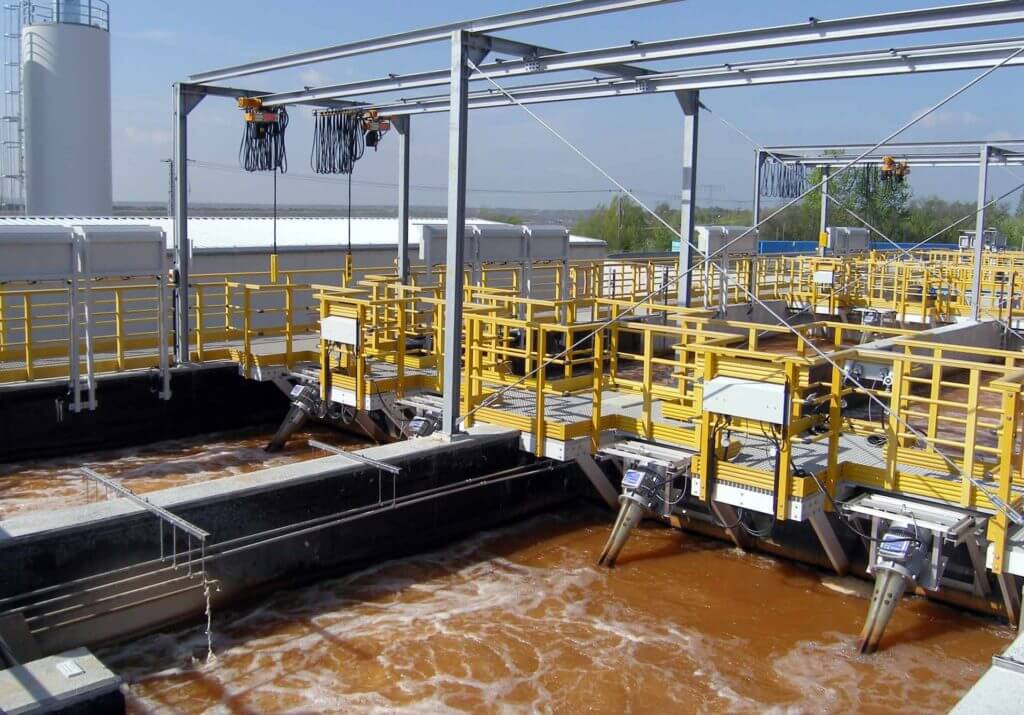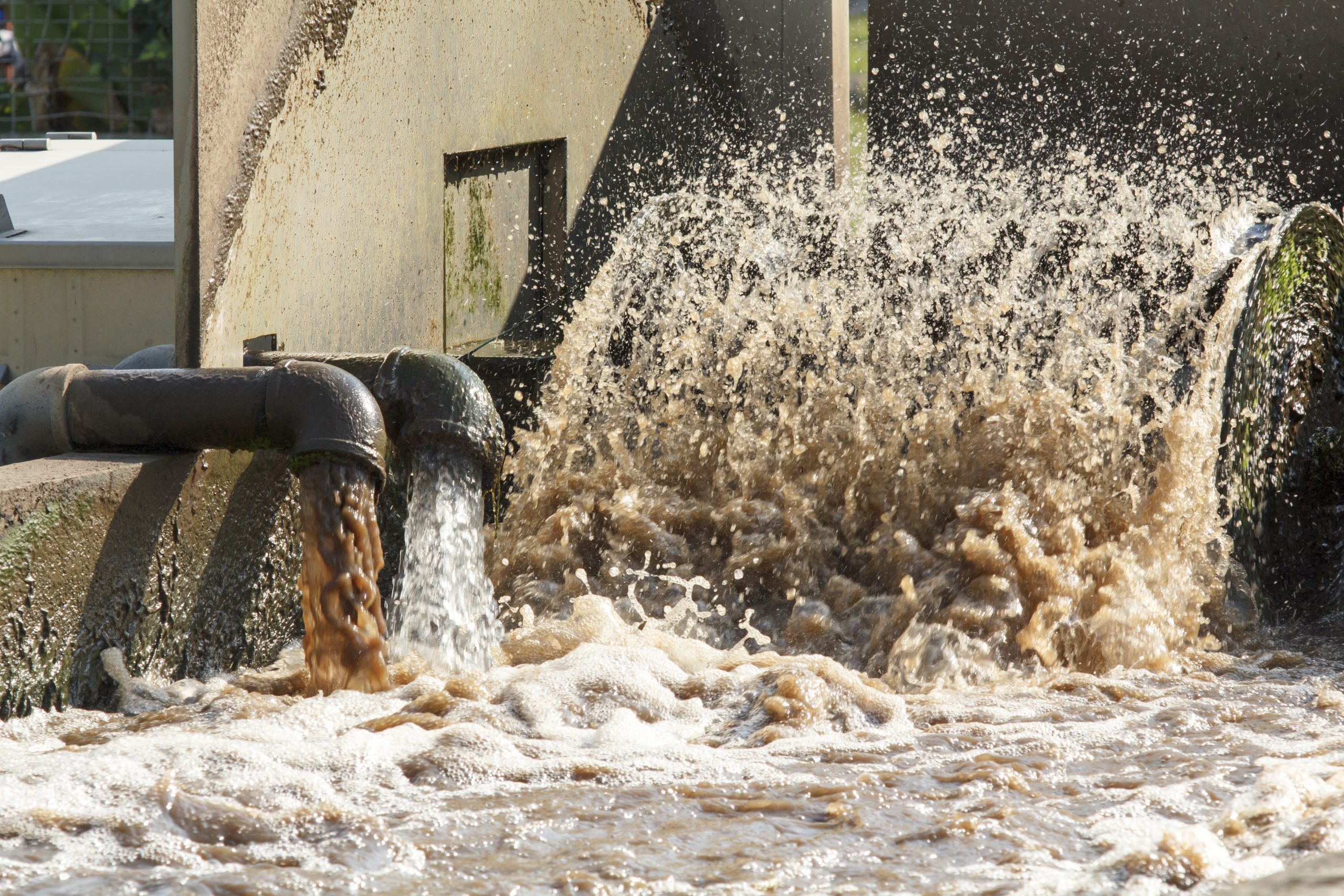Industrial Waste Water Treatment-- Eco-Friendly Solutions for Water Recycling
Industrial Waste Water Treatment-- Eco-Friendly Solutions for Water Recycling
Blog Article
Innovations and Advancements in Hazardous Waste Water Treatment Technologies
The landscape of industrial wastewater therapy is going through a transformative shift, driven by technologies that improve both effectiveness and sustainability. As regulatory requirements advance, the integration of AI and machine knowing into wastewater monitoring systems assures to improve procedures and ensure conformity.
Review of Drainage Treatment Technologies
Wastewater therapy innovations encompass a range of methods created to eliminate contaminants from industrial effluents prior to their launch right into the setting. These technologies are crucial for maintaining ecological balance and guaranteeing compliance with environmental laws. The main categories of wastewater therapy include physical, chemical, and biological methods, each serving distinctive objectives based on the nature of the contaminants existing.

Organic treatment techniques employ bacteria to break down natural issue, making them specifically reliable for organic-rich effluents. Methods like turned on sludge and biofilm reactors harness the all-natural deterioration abilities of microorganisms, bring about substantial decreases in biochemical oxygen need (BODY)
Advanced Purification Methods
Advanced purification techniques represent a critical development in the realm of industrial wastewater therapy, enhancing the efficiency of pollutant removal procedures. Industrial Waste Water Treatment. These approaches incorporate a series of modern technologies, including microfiltration, ultrafiltration, nanofiltration, and turn around osmosis, which give consecutive obstacles for various fragment sizes and chemical frameworks
Microfiltration and ultrafiltration make use of membrane systems to eliminate put on hold solids, bacteria, and larger organic particles, improving the high quality of effluent previous to additional therapy. Nanofiltration bridges the void in between ultrafiltration and turn around osmosis, efficiently eliminating natural substances and divalent ions, therefore minimizing the tons on downstream procedures.
Reverse osmosis provides the highest degree of filtration by enabling only water and little molecules to pass with its semi-permeable membranes, making it suitable for recovering high-grade water from industrial effluents. Recent improvements in membrane layer modern technology, consisting of the advancement of even more fouling-resistant and durable materials, have actually substantially improved operational performance and reduced expenses.
Including these innovative filtering strategies not just boosts the general therapy procedure however additionally adds to sustainability efforts by enabling water reuse and resource recuperation in commercial setups. (Industrial Waste Water Treatment)
Organic Therapy Innovations

In addition, the development of engineered biological you could check here systems, such as membrane bioreactors (MBRs), incorporates biological therapy with sophisticated membrane layer filtering. This integration enables higher effluent quality and minimized footprint, making it suitable for space-constrained industrial facilities. Innovations in genetically engineered microorganisms have actually also arised, improving the biodegradation of details contaminants, such as drugs and heavy steels, that are commonly challenging to remove.
In addition, the application of bioaugmentation strategies, where beneficial germs are introduced to improve the existing organic treatment processes, has actually shown encouraging cause enhancing therapy performance. These technologies collectively symbolize a fad towards even more effective and lasting biological treatment techniques that can adapt to the progressing intricacies of commercial wastewater streams. As industries remain to focus on ecological conformity, these biological developments will certainly play a crucial function in wastewater monitoring.

Resource Recovery Approaches
In industrial setups, the assimilation of resource recuperation techniques has come to be progressively vital for boosting sustainability and reducing waste. These methods concentrate on extracting beneficial materials and power from wastewater streams, thus changing prospective pollutants into multiple-use resources.
One prominent technique is nutrient healing, where nitrogen and phosphorus, frequently existing in excess in wastewater, are caught and transformed into plant foods. This not only minimizes environmental effects yet also gives a circular economic climate remedy for agricultural applications. find this In addition, technologies such as anaerobic digestion permit for the conversion of organic waste into biogas, an eco-friendly energy source that can balance out fossil gas use in industrial procedures.
Furthermore, advanced filtering and membrane layer technologies help with the healing of commercial by-products such as metals and salts. These recouped products can be reintegrated into production processes, minimizing the demand for virgin resources.
Future Trends in Waste Water Administration
As markets significantly focus on sustainability, the future of wastewater management is readied to go through considerable improvements. Technical innovations, such as artificial intelligence and device knowing, will allow a lot more reliable surveillance and monitoring of wastewater systems. These modern technologies can forecast upkeep demands, maximize therapy procedures, and improve decision-making, eventually minimizing operational expenses and environmental impact.
Moreover, the integration of circular economic situation concepts will certainly play a critical duty in wastewater administration. Industries are anticipated to move towards systems that not only deal with wastewater yet likewise recuperate important resources, such as nutrients, water, and power. This change will reduce waste and promote the reuse of products, straightening with international sustainability goals.
Emerging therapy strategies, such as membrane layer bioreactors and advanced oxidation processes, will certainly additionally improve the performance of wastewater therapy, permitting better effluents appropriate for reuse. Furthermore, governing frameworks are most likely to evolve, highlighting more stringent requirements for wastewater discharge and motivating sectors to adopt innovative therapy services.
Verdict
To conclude, the evolution of commercial wastewater treatment modern technologies shows a significant change towards boosted efficiency and sustainability. Technologies in sophisticated filtration methods, organic treatments, and source recovery approaches highlight the industry's dedication to environmental stewardship. The combination of artificial intelligence and artificial intelligence further enhances these procedures, guaranteeing regulative conformity and promoting a round economic situation. about his Continued improvements in these areas will play a critical role fit the future of wastewater monitoring and protecting crucial water sources.
The landscape of commercial wastewater therapy is undergoing a transformative shift, driven by developments that improve both effectiveness and sustainability.Wastewater therapy innovations incorporate an array of approaches made to get rid of impurities from commercial effluents prior to their launch right into the setting.Using the power of organic procedures has actually led to substantial technologies in the therapy of commercial wastewater.Furthermore, the application of bioaugmentation methods, where useful microorganisms are introduced to enhance the existing biological therapy procedures, has actually shown promising results in boosting therapy efficiency. These developments collectively signify a trend in the direction of even more sustainable and efficient biological treatment methodologies that can adjust to the progressing complexities of industrial wastewater streams.
Report this page